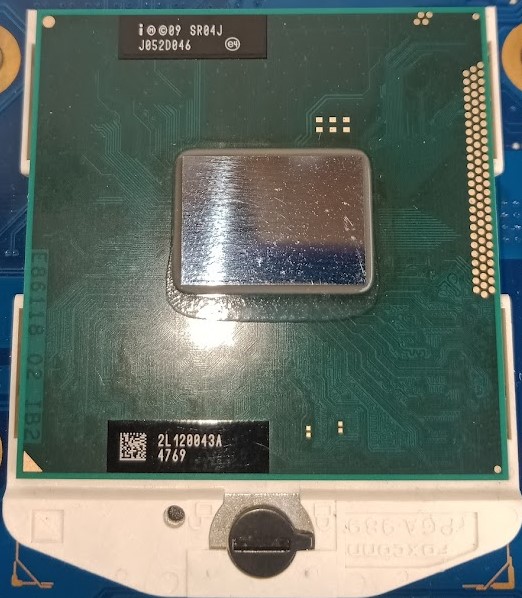Comparing: Intel Core i3 2330M vs Intel Core i9 11900F
In this comparison, we analyze two Processors: Intel Core i3 2330M and Intel Core i9 11900F, using synthetic benchmark tests to evaluate their overall performance. This side-by-side comparison helps users understand which hardware delivers better value, speed, and efficiency based on standardized testing. Whether you're building a new system or upgrading an existing one, this benchmark-driven evaluation offers valuable insights to guide your decision.
Specification Comparison Table
This specification comparison presents technical details of several devices or components to help you understand the key differences between each option. Use this table as a reference to determine which device best suits your needs.
| Specification | Intel Core i3 2330M | Intel Core i9 11900F |
|---|---|---|
| Architecture | x86 | x86 |
| Technology | 32 nm | 14 nm |
| Clock | 2.2 GHz - - | 2.5 GHz - 5.2 GHz |
| Core/Thread | 2 / 4 | 8 / 16 |
| Segmen | Mobile | Desktop |
Submission Comparison Table
This submission comparison table displays the number and details of benchmark data submissions from various devices or components. This information helps you understand the performance based on the benchmarks that have been tested, as well as providing an overview of the consistency and popularity of the available benchmark results.
| No. | Benchmark Software | Intel Core i3 2330M | Intel Core i9 11900F |
|---|---|---|---|
| 1 | Cinebench - R15 |
163 cb |
2034 cb |
Submission Comparison Chart
This chart visualizes the benchmark scores comparison between two hardware devices based on submitted data.
Media Gallery
A collection of photos of tested hardware. These images can help you identify the physical form, model, and variant of the hardware in question. These photos are from our own documentation, and if they are not available we may not be able to document them.
About Hardware Intel Core i3 2330M
The Intel Core i3-2330M is a dual-core mobile processor launched in 2011 as part of Intel’s second-generation Sandy Bridge lineup. Designed for mid-range laptops, this processor features 2 cores and 4 threads thanks to Intel Hyper-Threading Technology, allowing it to handle light to moderate multitasking workloads efficiently. Operating at a fixed clock speed of 2.2 GHz and built on the 32nm process, the i3-2330M does not include Intel Turbo Boost, which limits its ability to dynamically increase performance under heavier loads, but it remains a solid choice for everyday use.
With a TDP of 35W, the i3-2330M balances power consumption and performance reasonably well for its era. It integrates Intel HD Graphics 3000, a GPU with a base clock of 650 MHz and a dynamic frequency up to 1.1 GHz. While not designed for modern gaming or demanding graphic applications, this integrated GPU handles HD video playback, basic 3D rendering, and older or lightweight games at low settings with relative ease. Users looking for casual computing and multimedia playback will find it sufficient.
In real-world usage, the Core i3-2330M performs well for standard computing tasks such as web browsing, streaming, office productivity (e.g., Word, Excel), and simple photo editing. Its Hyper-Threading capabilities give it a performance edge over older dual-core processors that lack thread duplication. However, the lack of Turbo Boost and a relatively low base frequency mean that it can struggle under CPU-intensive workloads like video rendering or large spreadsheet processing, especially when compared to more modern CPUs.
This specific configuration was tested on a SAMSUNG 300E4Z, a laptop originally shipped with an Intel Celeron B815 processor but later upgraded to the i3-2330M for better performance. With 4GB of DDR3 dual-channel memory and Windows 7 installed, the system runs smoothly for basic daily use, making the i3-2330M a practical upgrade option for budget-conscious users seeking improved performance without replacing their entire system.
Hardware Detail:
Device: SAMSUNG 300E4Z (This device originally used Celeron B815 which was upgraded to i3 2330M.)
RAM: 4GB DDR3 Dual Channel
OS: Windows 7
Friday, 05 February 2021 15:48:13 | Update: 1 month ago
About Hardware Intel Core i9 11900F
The Intel Core i9-11900F, launched in 2021, is a high-end desktop processor from the 11th generation Rocket Lake family. Featuring 8 cores and 16 threads, this CPU is built for users who demand strong single-core performance in tasks such as gaming, creative workloads, and professional applications. With a base clock speed of 2.5 GHz and a boost clock up to 5.2 GHz via Intel Turbo Boost Max Technology 3.0, the i9-11900F delivers fast responsiveness and excellent performance in lightly threaded scenarios.
Manufactured on the 14nm process, the i9-11900F introduces architectural improvements over its predecessor, including a significant IPC (Instructions Per Cycle) gain, thanks to the new Cypress Cove core design. However, despite these gains, the reliance on the older 14nm node leads to higher power consumption and lower efficiency compared to AMD’s Ryzen 5000 series built on 7nm technology—especially in sustained multi-threaded workloads.
As an “F” series processor, the i9-11900F lacks integrated graphics, meaning it requires a dedicated GPU to operate. This makes it a better fit for gaming PCs or professional workstations that already include a discrete graphics card. While this may not be ideal for users seeking basic systems without a GPU, it allows Intel to price the CPU more competitively.
In benchmarks and real-world performance tests, the Core i9-11900F excels in gaming, offering frame rates comparable to top-tier CPUs when paired with a modern graphics card. It also performs well in productivity tasks such as photo editing, software development, and video rendering—though users working with highly threaded applications might benefit more from CPUs with higher core counts.
Overall, the Intel Core i9-11900F is a solid choice for enthusiast builders, gamers, and users looking for top-tier single-core performance, but it may not be the most efficient option for heavy multitasking or rendering workloads when compared to newer multi-core CPUs.
Monday, 20 June 2022 07:37:04 | Update: 1 month ago




